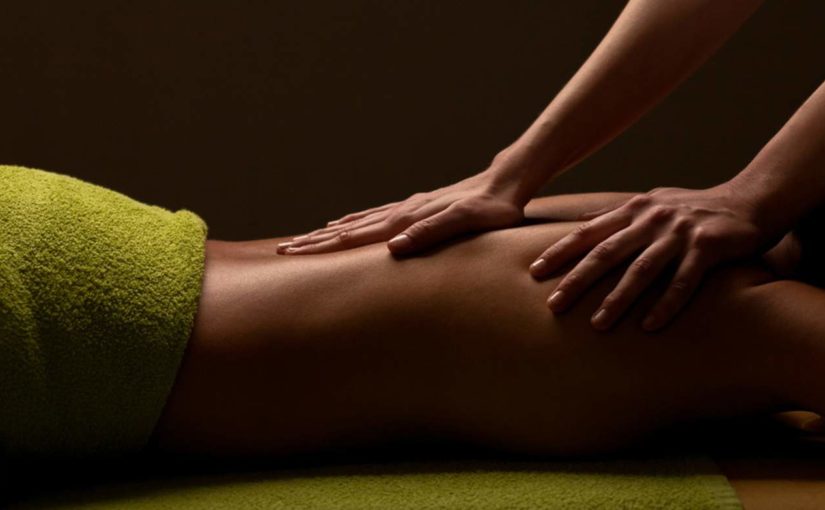By Kate O’Rourke
San Francisco—Results from a pilot study evaluating two treatment schedules of a standardized Swedish massage technique to treat chemotherapy-induced peripheral neuropathy (CIPN) showed that both massage two and three times per week could reduce CIPN-related symptoms. The single-blind study was presented at the 2019 Supportive Care in Oncology annual meeting (abstract 111).
“As far as our primary aim with completion rate, there was actually no statistical difference in completion rate when comparing the two-times- versus three-times-per-week treatment group, which can really help in aiding future study design,” said presenting study author Gabriel Lopez, MD, an associate professor and the medical director of the Integrative Medicine Center in the Department of Palliative, Rehabilitation and Integrative Medicine at the University of Texas MD Anderson Cancer Center, in Houston.
Short- and long-term toxicity of platinum compounds and taxanes include development of CIPN, for which there are limited options for symptomatic relief. Although anti-neuropathic medications are available, there is increased interest from health care providers and patients in complementary approaches for symptom control.
Massage therapy, listed as a complementary health approach by the National Center for Complementary and Integrative Health, is one of the most common integrative medicine therapies mentioned in a review of National Cancer Institute–designated comprehensive cancer center websites, and is the most common complementary therapy offered in health systems for cancer patients: acupuncture/massage (73.3% each); meditation/yoga (68.9% each); and consultations about nutrition (91.1%), dietary supplements (84.4%), and herbs (66.7%) (J Natl Cancer Inst Monogr 2017;52). A recent study demonstrated that after a single massage therapy session, at least 50% of patients reported improvement in all CIPN-related symptom categories (J Clin Oncol 2016;34[26 suppl]: abstract 193).
“‘Oncology massage’ refers to a specific set of techniques using Swedish massage, given by massage therapists who have training in working with cancer patients, taking into account the specific needs of this unique population,” said Dr. Lopez. “‘Specific needs’ mean needs to adjust for different kinds of site restrictions. For example, does the patient have an area of the skin that might better not be massaged? Are there concerns regarding port placement, body positioning and bolstering?”
Selected Patient Group
The new study exploring the role of massage therapy in symptomatic relief of CIPN included patients with gastrointestinal and breast malignancies who had lower extremity neuropathy attributable to oxaliplatin or taxanes, and patients self-reported a neuropathic pain score of 3 or higher on a 10-point scale. In addition, patients were required to be at least six months from the last chemotherapy treatment and on a stable dose of medications for management of CIPN symptoms for at least two weeks before enrollment. Individuals were excluded from the study if they had previously diagnosed peripheral neuropathy from causes other than chemotherapy, a platelet count of less than 20,000 cells/mcL, or a neutrophil count of less than 500 mm3. Other exclusion criteria were pregnancy, deep vein thrombosis, bone metastases, active skin infection or lymphedema involving the treatment field. The researchers assessed pain using the Pain Quality Assessment Scale, a 20-item measure developed to quantify quality and intensity of neuropathic pain. Subscales include surface pain, deep pain and paroxysmal pain.
Of the 71 patients in the study group, 77.5% were women, 57.7% had breast cancer and 42.3% had gastrointestinal cancer. The mean age was 60.3 years. The average length of time since the end of chemotherapy was more than three years. The mean massage completion rates (maximum of 12) were 8.9 for the three-times-per-week group and 9.8 for the two-times-weekly group.
Compared with patients who received massage two times per week, those who received massage three times per week had greater improvements in pain (Table). “In the three-times-per-week group, there was a sustained improvement in the CIPN up to six weeks after the massage treatment was completed,” said Dr. Lopez. “When comparing the lower extremity versus head-neck alternate site massage treatment protocols, there was no difference in protocols as far as promoting relief of CIPN.” Dr. Lopez said a large-scale efficacy trial with a no-treatment control group is planned.
| Table. Change in Pain Quality Score With Massage Therapy | |||
| Type of CIPN | PQAS-R Score | P Value | |
|---|---|---|---|
| Massage Three Times Per Week | Massage Two Times Per Week | ||
| Surface pain | –2.3 | –0.6 | 0.001 |
| Deep pain | –2.1 | –0.9 | 0.008 |
| Paroxysmal pain | –2.3 | –1.0 | 0.025 |
| CIPN, chemotherapy-induced peripheral neuropathy; PQAS-R, Revised Pain Quality Assessment Scale | |||
More Data Needed
In a discussion of the study at the meeting, Charles Loprinzi, MD, the Regis Professor of Breast Cancer Oncology at Mayo Clinic in Rochester, Minn., said currently available data do not support a clinical practice recommendation of therapeutic massage for CIPN at this time. “Massages can feel good, and there does not appear any good reason to recommend against a massage in a patient with prominent CIPN,” said Dr. Loprinzi. “We need to await further phase 3 trial data.” If the results are positive, he said, massage “should be a welcome [therapeutic] approach.”
Dr. Loprinzi said other nondrug therapies that look promising for preventing and/or treating CIPN include exercise, scrambler therapy (a noninvasive cutaneous electrostimulation device), transcutaneous electrical nerve stimulation, and cryo-compression therapy (applying ice or compression items to hands or feet).
This article was published by Clinical Oncology News.


